Enjoy this easy recipe for Kabocha Salad, a delicious Korean pumpkin salad perfect for fall. Packed with flavor and health benefits, this authentic kabocha squash side dish is a must-try for lovers of Korean cuisine.
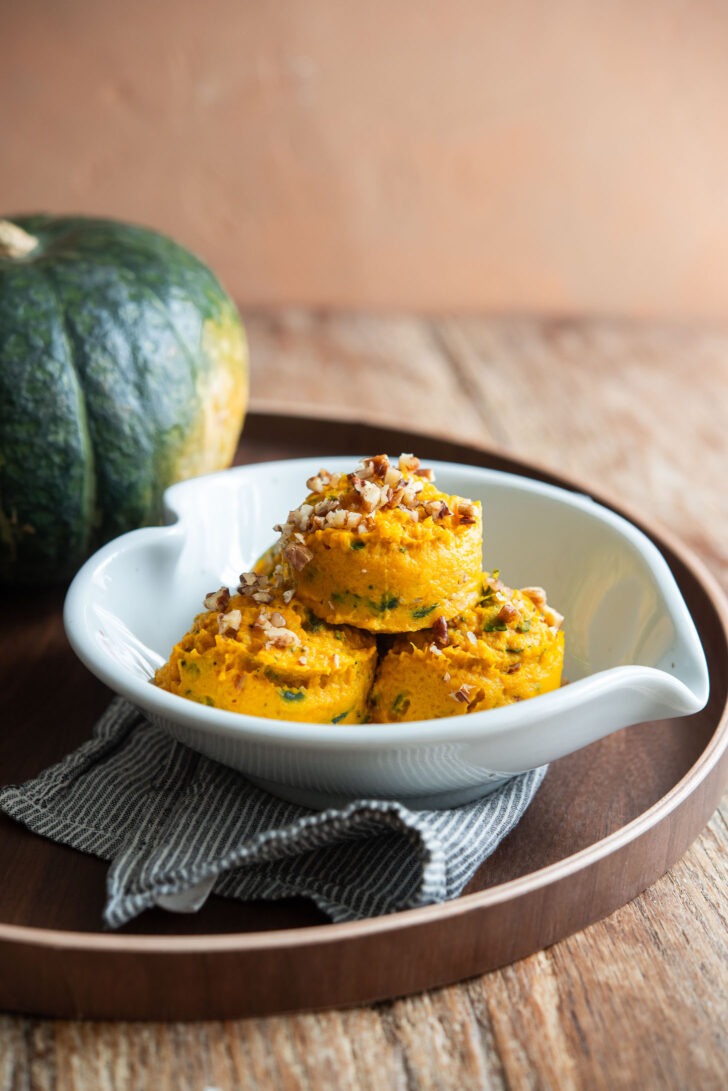

When autumn arrives, my cravings turn to the irresistible flavors of Korean pumpkin, particularly a delectable side dish known as kabocha salad. My first encounter with this dish was at a hotel in Korea, where it was featured in the breakfast buffet.
The dish was so memorable that I couldn’t resist recreating it once I returned home. It was such a hit that I added a similar kabocha recipe to the ‘Side Dishes’ section of my cookbook, Korean Cooking Favorites.
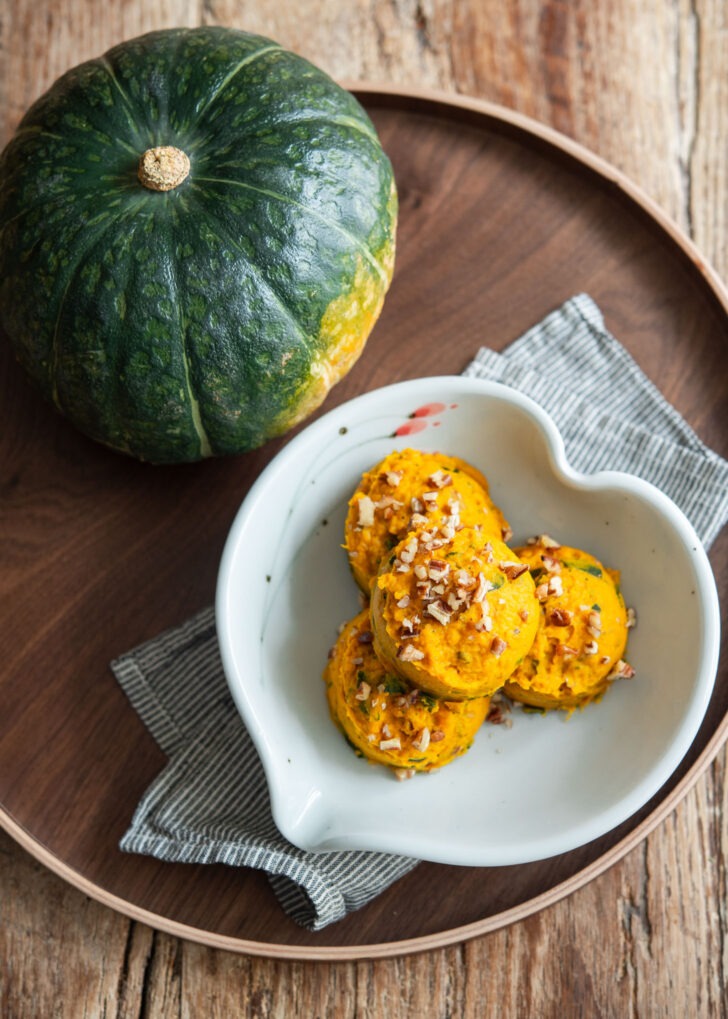

Korean Kabocha Salad: Must-Try Fall Recipe
While Korean potato salad reigns supreme in spring and summer, fall and winter brings its own culinary star: kabocha salad. This delicious and authentic Korean pumpkin salad is an easy-to-make, must-try seasonal side dish.
This kabocha recipe features golden mashed kabocha squash, made creamy with mayo or Greek yogurt. A touch of honey adds natural sweetness, while pecans contribute crunch and depth of flavor. For those who like a little extra surprise, dried raisins make a delightful addition.
Unlike the Japanese variant, Korean kabocha salad is unique for its inclusion of the skin, which becomes pleasingly tender upon steaming and adds to the salad’s visual and flavorful allure—as long as you resist the urge to blend it into a puree.
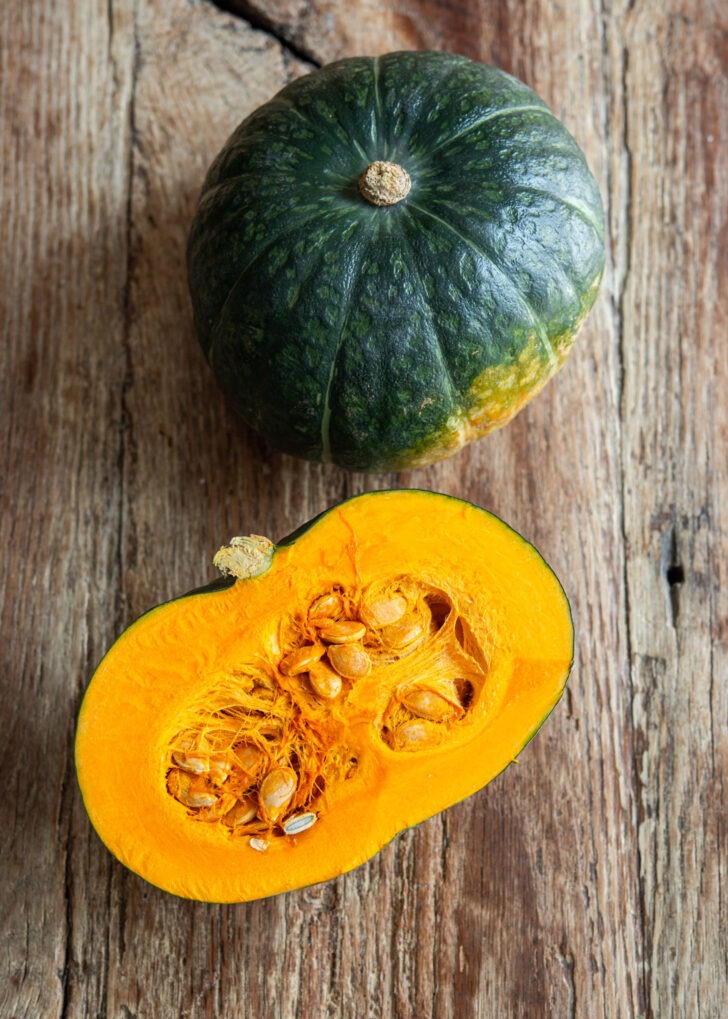

Kabocha Squash
What is Kabocha Squash?
Kabocha squash, also known as Japanese pumpkin, is commonly called sweet pumpkin (dan-hobak, 단호박) in Korea. As a result, kabocha squash salad is often referred to as pumpkin salad.
Known for its sweet and nutty flavor, this winter squash differs from its counterparts like butternut or acorn squash in taste, texture, and nutritional content. Kabocha is rich in vitamins and fiber, making it not just delicious but also incredibly healthy.
Check out my Korean pumpkin porridge and Kabocha squash soup recipes for another way to use kabocha squash in Korean cooking.
Health Benefits of Kabocha
Kabocha squash is not just tasty but also a health powerhouse. It’s rich in vitamins A and C for skin and immunity, and it’s a good source of fiber for digestion. Plus, it’s lower in calories than other squashes, making it great for weight management.
Best Cooking Method for Kabocha Squash
For this Korean kabocha squash salad, steaming is the recommended method, as it retains the squash’s nutritional content while drawing out its natural sweetness. The softness of the skin post-steaming also allows for its inclusion in the salad, offering additional nutrients and less waste.
Essential Ingredients
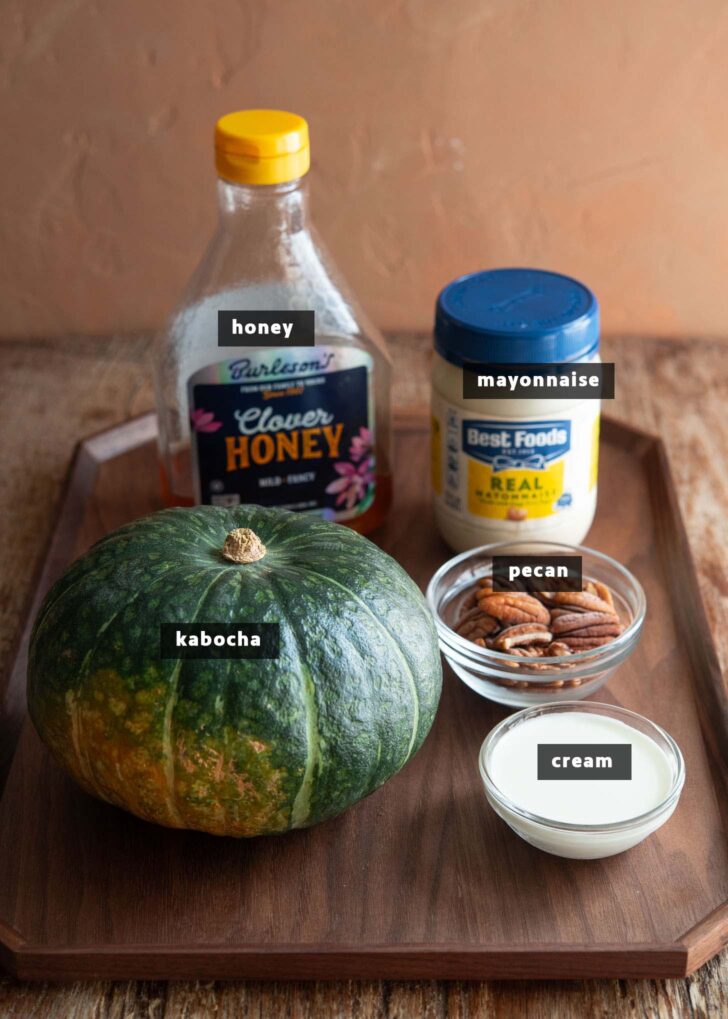

- Kabocha Squash: This is the star of the dish, known for its sweet, nutty flavor and its health benefits like vitamins and fiber.
- Mayonnaise or Greek Yogurt: These add creaminess to the salad. Mayonnaise brings a rich flavor, while Greek yogurt offers a tangy, healthier alternative.
- Honey: A touch of natural sweetness that balances the savory elements.
- Heavy Cream: For added richness and a smooth texture, making the salad more indulgent.
- Pecans: These give the salad a delightful crunch, adding a layer of complexity to its texture.
- Salt: A pinch to enhance all the other flavors and tie the dish together.
Optional Additions: Dried Fruits
Raisins or cranberries make for great optional additions, infusing the salad with additional sweetness and a splash of color.
Step-by-Step Guide to Creating Korean Kabocha Salad
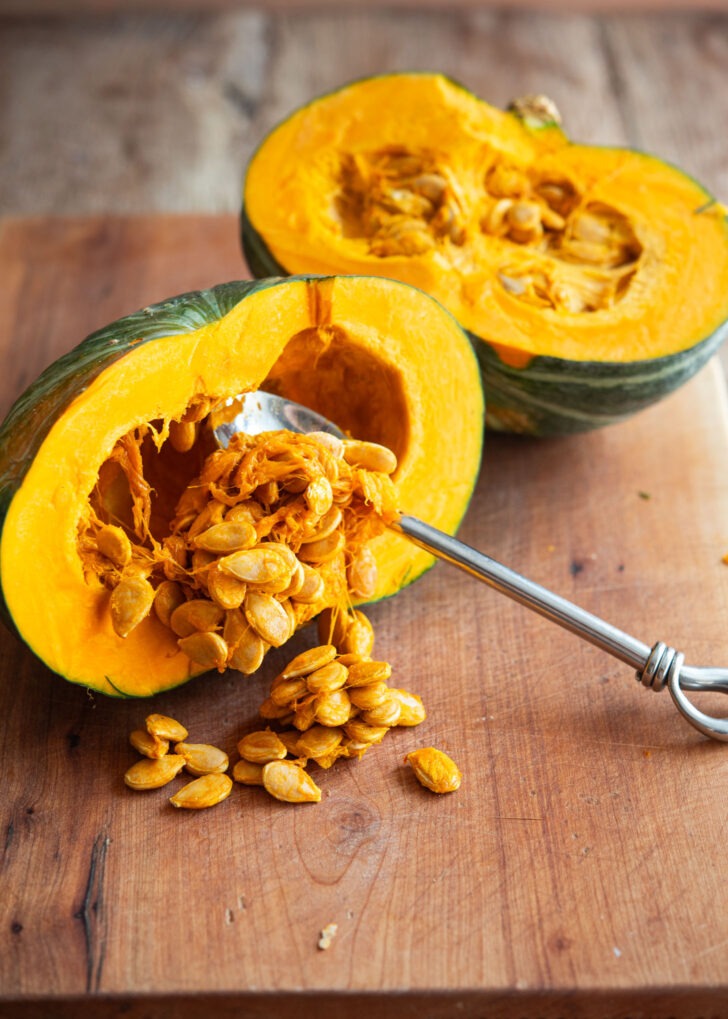

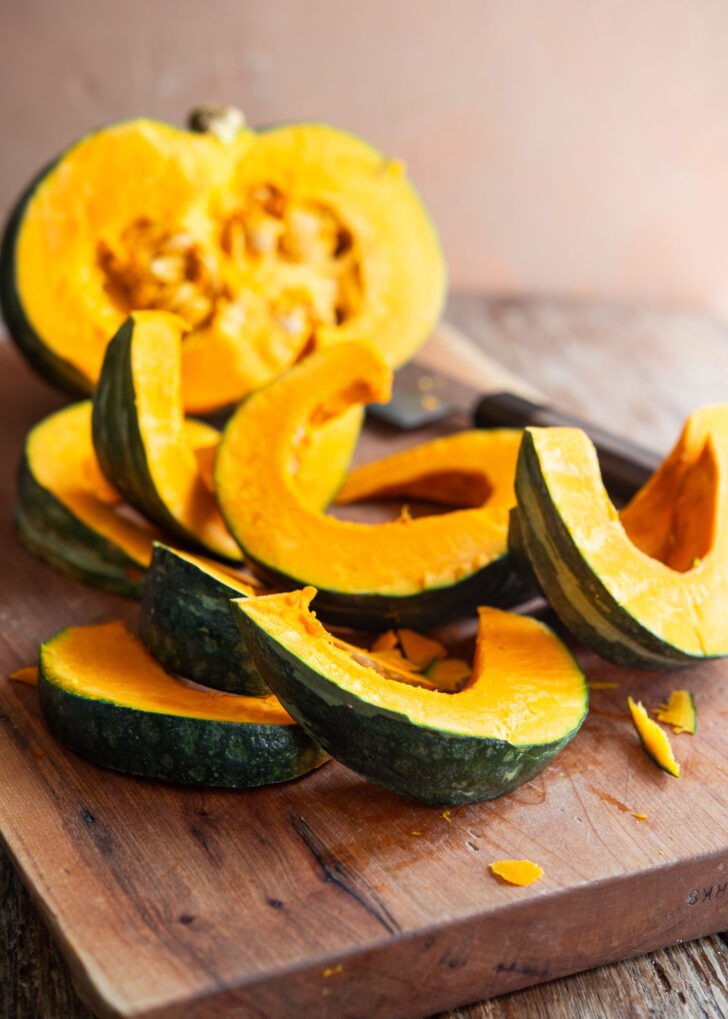

Step 1. Prep the Kabocha Squash
- Wash the skin thoroughly. Cut the squash in half with a sharp knife and remove the seeds.
- Keep the skin on and slice the squash into wedges.
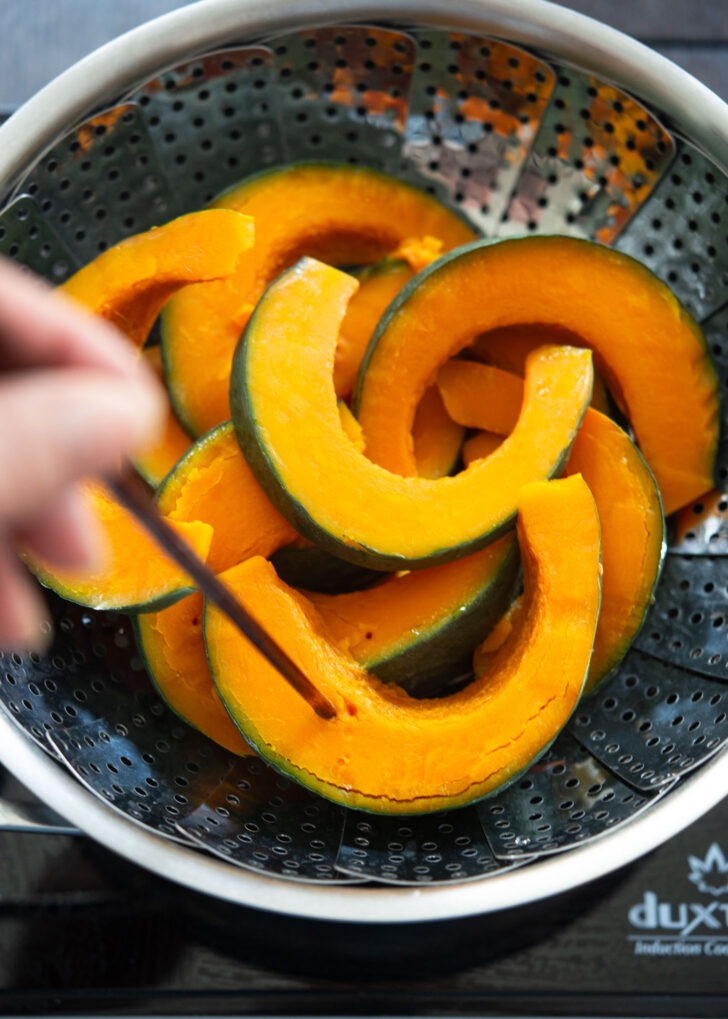

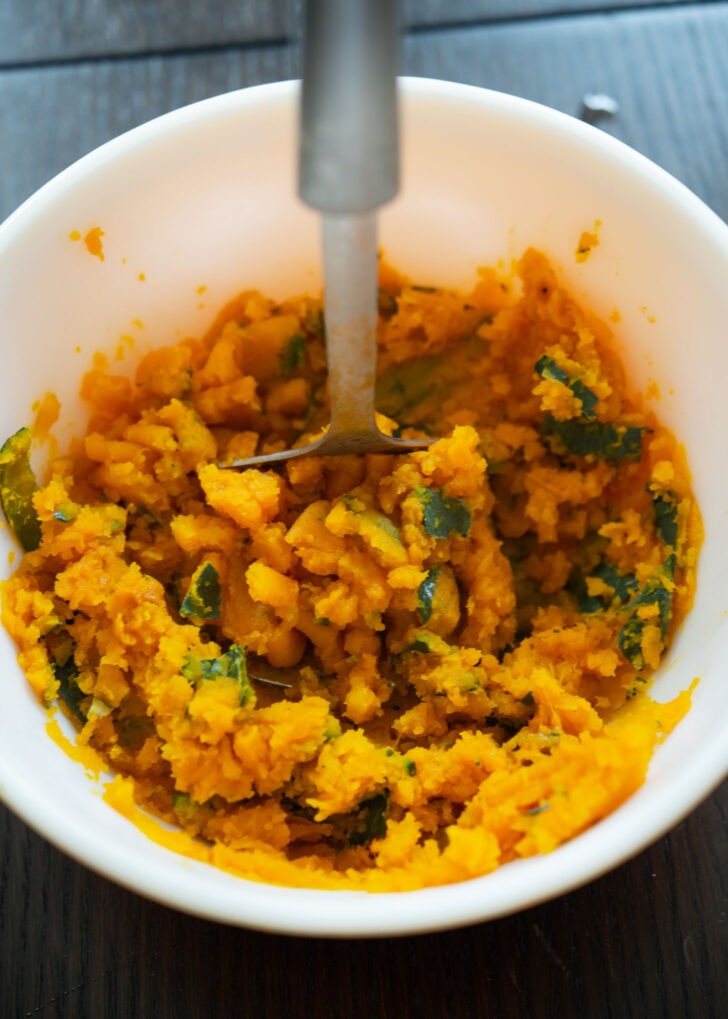

Step 2. Steam Kabocha
- Place the slices in a steamer and steam for 5-10 minutes. You’ll know it’s done when you can easily poke a chopstick through a slice.
Try my Pumpkin Bundt Cake or Pumpkin Dinner Rolls with steamed kabocha squash!
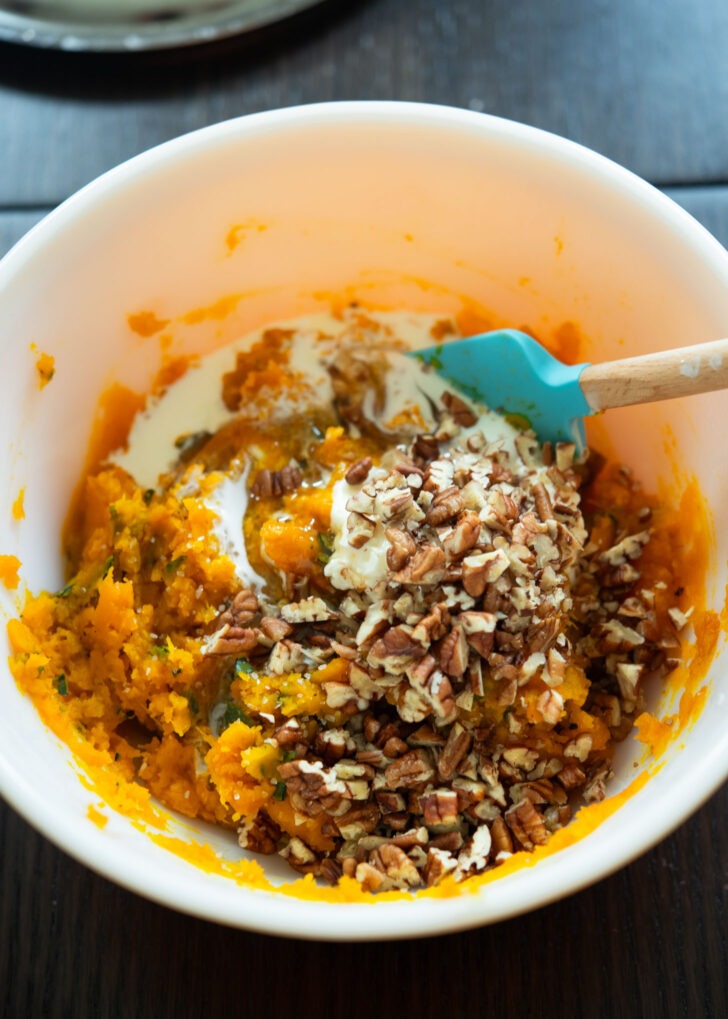

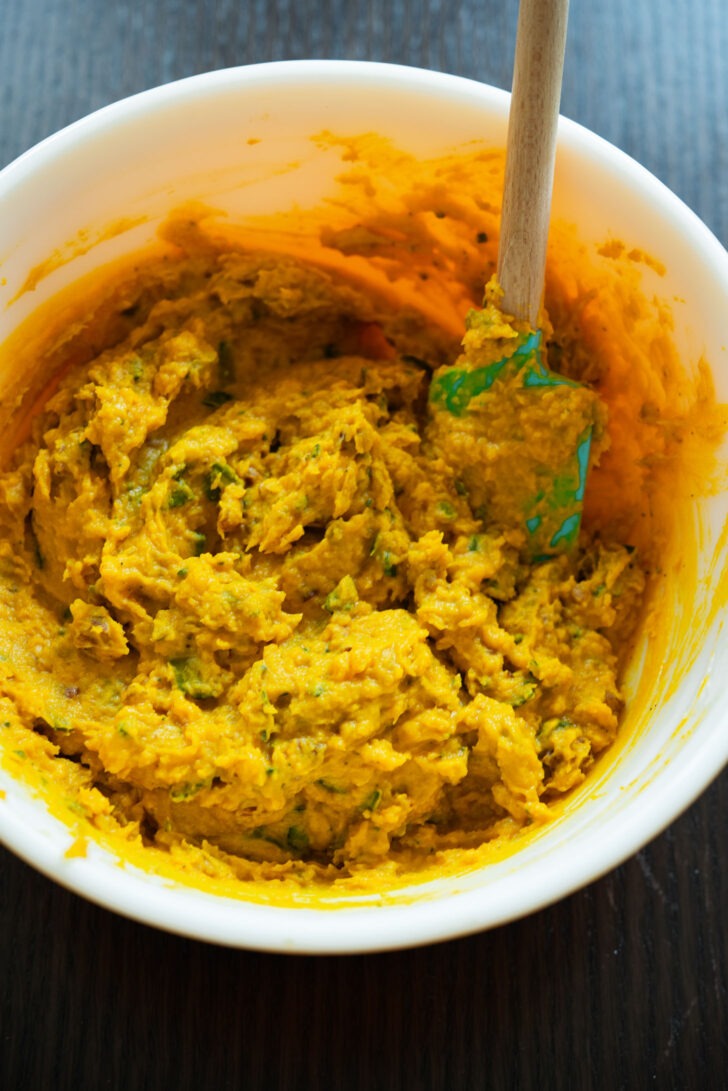

Step 3. Mash and Mix
- In a large bowl, roughly mash the kabocha, skin and all. It’s okay to leave some chunks.
- Stir in mayonnaise or Greek yogurt, honey, and heavy cream. For a creamier texture, feel free to add a bit more cream. Season with salt according to your taste.
- Mix in the chopped pecans for crunch.
Serving Options: You can serve the salad warm, or you can chill it in the fridge until you’re ready to eat.
Creative Ways to Serve Korean Pumpkin Salad
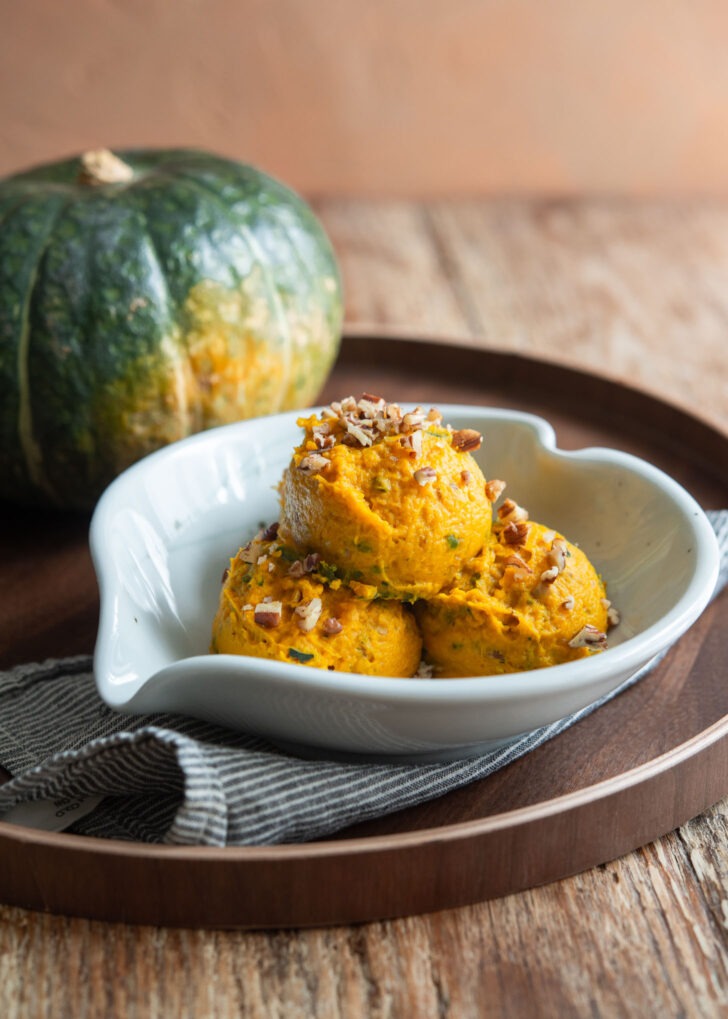

This tasty kabocha squash salad is usually enjoyed as a chilled side dish in Korean meals. For an eye-catching presentation, consider using a large cookie (or ice cream) scoop to form the salad into neat balls on your serving plate.
Another delicious way to relish this versatile Korean pumpkin salad is to turn it into a sandwich filling. Just spread a generous amount between slices of bread, similar to making an egg salad sandwich. The chilled version of the kabocha salad works especially well for this.
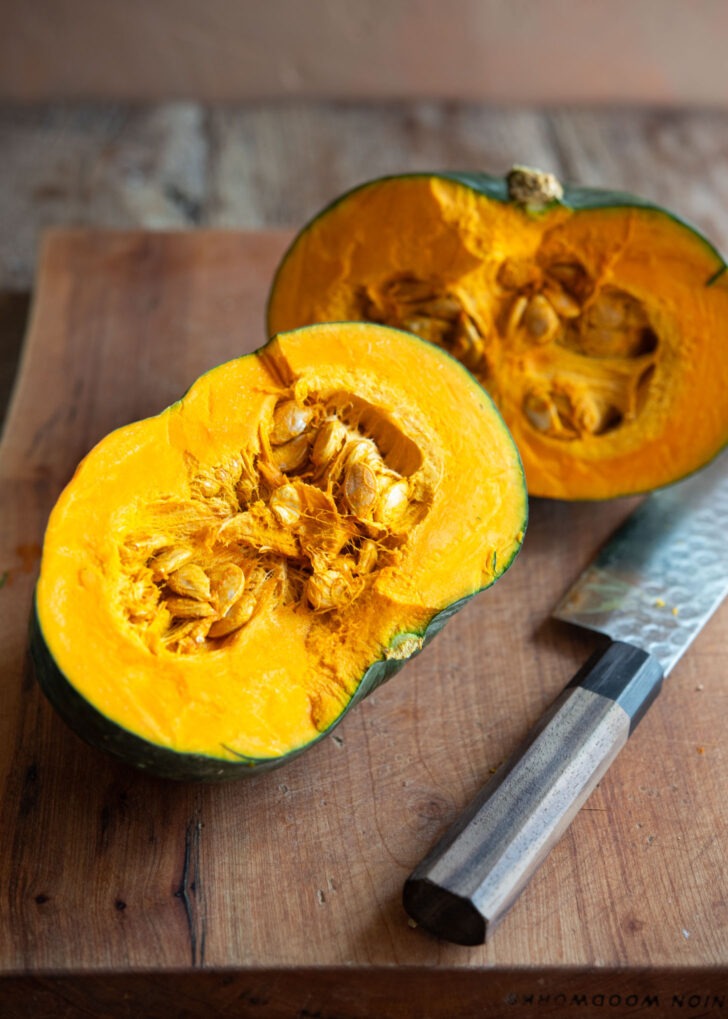

More Pumpkin Recipes for Fall
Love this recipe? Rate it and share your experience in the comments below! On Instagram? Tag me to showcase your creation. For more delicious recipes, subscribe to our newsletter!
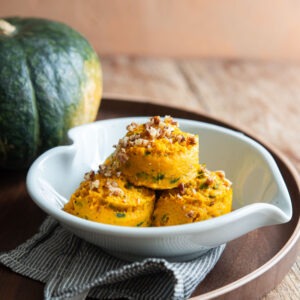

Kabocha Salad: Easy Korean Pumpkin Salad
Enjoy this easy recipe for Kabocha Salad, a delicious Korean pumpkin salad perfect for fall. Packed with flavor and health benefits, this authentic side dish is a must-try for lovers of Korean cuisine.
- 1 1/2 lb (700 g) kabocha sqush
- 2 tbsp mayonnaise, or Greek yogurt
- 2 tbsp heavy cream, or more
- 1-2 tbsp honey
- 1/4 tsp salt
- 1/3 cup chopped pecan
-
Prep the Kabocha Squash: Wash the skin thoroughly. Cut the squash in half and remove the seeds. Keep the skin on and slice the squash into wedges.
-
Steam Kabocha: Place the slices in a steamer and steam for 5-10 minutes. You’ll know it’s done when you can easily poke a chopstick through a slice.
-
Mash and Mix: In a large bowl, roughly mash the kabocha, skin and all. It’s okay to leave some chunks. Stir in mayonnaise or Greek yogurt, honey, and heavy cream. For a creamier texture, feel free to add a bit more cream. Season with salt according to your taste. Mix in the chopped pecans for crunch.
-
Serving Options: You can serve the salad warm, or you can chill it in the fridge until you’re ready to eat. See note below for presentation tip!
- Optional Additions: Raisins or cranberries can infuse the salad with additional sweetness and a splash of color.
- For an eye-catching presentation, consider using a large cookie (or ice cream) scoop to form the salad into neat balls on your serving plate.
Calories: 140kcal, Carbohydrates: 14g, Protein: 2g, Fat: 10g, Saturated Fat: 2g, Polyunsaturated Fat: 4g, Monounsaturated Fat: 4g, Trans Fat: 0.01g, Cholesterol: 8mg, Sodium: 133mg, Potassium: 429mg, Fiber: 2g, Sugar: 6g, Vitamin A: 1630IU, Vitamin C: 14mg, Calcium: 40mg, Iron: 1mg

